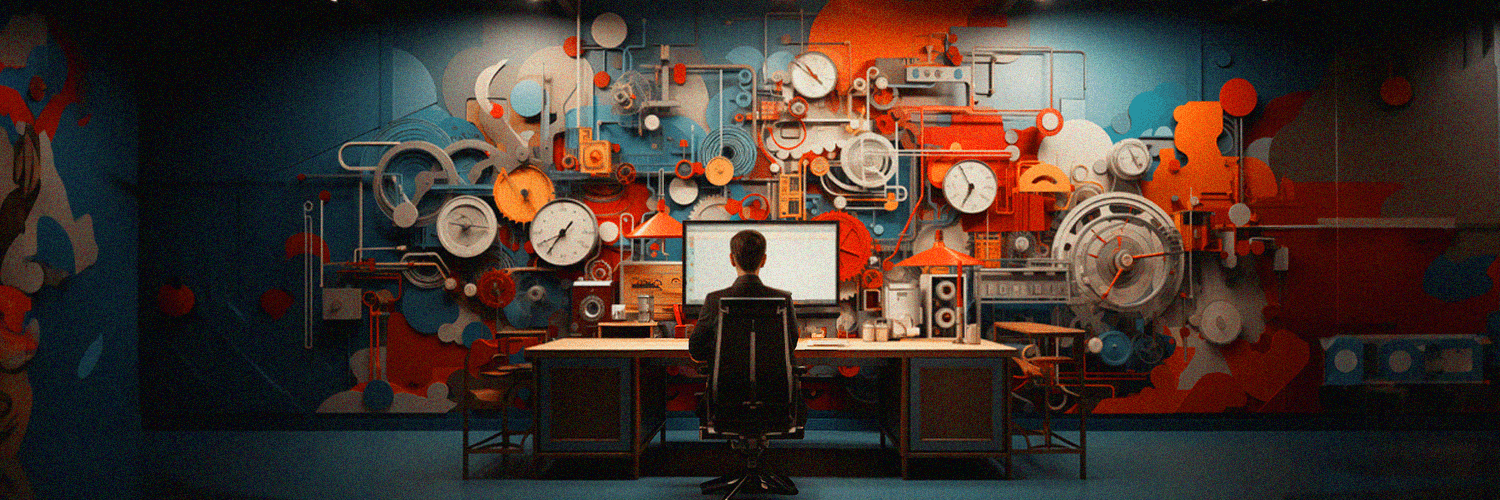Adopting new technology into your office can be extremely beneficial. With the right technology and tools, your team members can work more efficiently, collaborate easier, and produce better quality work. Workplace technology is the future of the office but implementing such technology can be easier said than done. Before you can even begin to adopt this technology, you need to convince management that it is worth investing in. If you're successful in this, you must then determine a budget, choose which tools to adopt, and get your team members familiar with the new system. Fortunately, we have a few tips on how you can build a strong business case for your workplace technology and improve the adoption process.
Lead with Employee Experience
While your role in this particular project is focused on solving technology-related problems, you should be considering how it will contribute to the employee experience on a broader level. Workplace technology is one of the three main factors that contribute to the employee experience, the others being workplace policies and the physical office. Technology can automate repetitive tasks, simplify tedious ones, and overall make work easier. Additionally, it can ease barriers to collaboration by allowing colleagues to connect easier while sharing important information.
It’s crucial that your workplace technology makes your employees’ jobs easier, not harder, and that it actually solves problems they are facing. For example, the time that your employees spend trying to find an available meeting room or desk may not seem significant, but it can add up and create frustrations. To resolve this, you may consider technologies such as hot desk booking software. Solutions such as this allow employees to easily book a desk or room in advance, ensuring that they have space - with no frustration or wait. This is a technology that optimizes your office while directly benefitting your employees.
Employee experience should be considered with each technology you implement. Beyond simplifying work for your employees, it can also offer countless benefits as an employer. For example, companies that invest heavily in the employee experience earn more than four times the average profit compared to companies that do not. This is because employees when you make an employee's job easier, they are able to perform better and find their job more satisfying. In turn, this boosts productivity and the bottom line.
When adopting new technology, start the conversation with employee experience. In showing how a new solution will solve problems for your team, in addition to reducing frustration,increasing productivity and collaboration, and improving retention, you will be speaking the language of your leadership team.
Adopt User-Friendly Technology
A significant aspect of adopting technology that enables employee experience is ensuring that it is user-friendly. After all, if you are implementing technology in your workplace, you must expect your employees to use it. If the purpose of adopting said technology is to make work more efficient, using the technology should not be a source of new frustrations. Furthermore, investing in user-friendly technology that requires little to no training empowers employees while reducing administrative work on your end. For example, if your workforce can use a mobile app to reserve rooms or request IT support, they won’t overwhelm your team with these requests.
It's important to note that just because a tool is user-friendly, it does not mean that it isn't highly capable and advanced. Workplace technology can simplify your current technical capabilities, especially if you use several software licenses between different locations. On-premise software solutions can be optimized, as they are often expensive to maintain and upgrade. Instead, you may want to implement cloud-based solutions, which tend to be much easier and more cost-effective. Cloud solutions are easier to integrate with the technology you already use, eliminating the need for users to remember multiple passwords and learn several systems. This not only simplifies daily tasks but also makes onboarding much easier as well. Ensuring that you have considered ease of use in your decision to implement new technology will give your leadership and employees greater confidence in the adoption process.
Focus on Workplace Analytics
A significant factor in choosing to adopt new workplace technology is whether or not it will help your company grow and succeed. The purpose of adopting new tools is to advance your organization and perform more efficiently. So, how do you verify that these technologies are fulfilling these intentions? The answer is simple – workplace analytics. Today's workplace technology is highly capable and will provide you with office utilization metrics to help you make better decisions.
Continuing with our previous example, a desk booking solution will not only make it easier for employees to find and book workspaces, but it will also provide you with occupancy rates and analytics. With this information, you can make better decisions regarding office space. You don't want to lease more office space if your existing locations aren't currently reaching capacity. Additionally, employees coming into the office expecting to collaborate with others will be disappointed to find an empty office. With workplace analytics, your desk booking solution can monitor capacity, ensuring that both leadership and team members have insights into space utilization of the office. Even beyond capacity, desk booking software can provide analytics regarding average meeting occupancy, peak occupancy, and average meeting times. With this information, managing and optimizing your office according to employee needs is easier than ever.
Make Your Case
Once you have convinced your office of the benefits of workplace technology, it is time to begin the adoption process. To help you through this process, here are some tips:
- Incentivize technology use. A great way to keep your employees up-to-date on technology is by tying training to job requirements. In doing this, new skills can lead to promotions and raises. This will encourage employees to utilize the new workplace technology while developing their skills and performing better in their roles.
- Take small steps. When adopting new technology, it can be helpful to introduce it in small pieces. Some employees will pick up on it quickly, while it may take longer for others. Be patient during the adoption process and provide employees with easy ways to implement the technology into their routine activities. This will help them get the hang of things and adjust gradually. Providing lunch and learn sessions and pairing employees with mentors can also be beneficial in introducing employees to new workplace tools.
- Demonstrate the value of technology. Technology means change, and many individuals are hesitant to welcome change. To ensure that this change is successful, share with employees why the technology is being adopted and how it will benefit both them and the company. This demonstrates to them that they are contributing to positive change, allowing them to feel valued themselves.
Investing in new workplace technology can be an expensive and time-consuming process, so it is understandable that leadership and employees may take a bit of convincing. Fortunately, if you choose to adopt user-friendly technology and cultivates a positive employee experience, the benefits of this technology will be obvious. With this technology in your toolbox, employees will find work easier and more satisfying, increasing productivity and success as a result.



.png)








